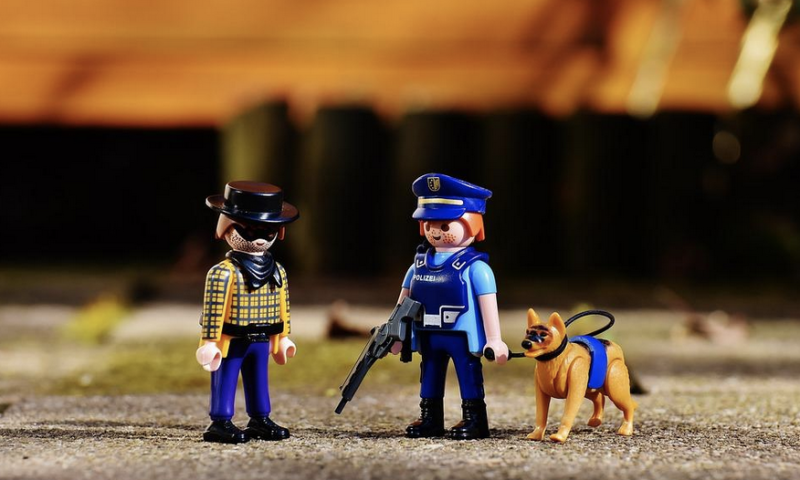Language, and by extension its emergent feature, narrative, is one of the distinctive characteristics that make us human. Humans are “storytelling animals,” as literary scholar Jonathan Gottschall would say; cultural philosopher Ernst Cassirer called man an “animal symbolicum” (or “symbolizing animal”); and anthropologist Leslie White proclaimed emphatically and severely:
Human behavior is symbolic behavior; if it is not symbolic, it is not human. The infant of the genus homo becomes a human being only as he is introduced into and participates in that supraorganic order of phenomena which is culture. And the key to this world and the means of participation in it is — the symbol.
According to linguist Daniel Everett, language and narrative serve three principle functions in human society (emphasis mine):
The ultimate accomplishment of language is building relationships — cultures and societies. . .We build these relationships through stories and conversations, even written ones, that establish and justify shared value-rankings (all of our values are hierarchical, as we see, for example, in the fact that for soldiers patriotism is valued above the commandment not to kill, etc), knowledge-structures (such as that red and blue belong to the set of colors and that colors to the set of qualities, and so on), and social roles (author, editor, teacher, laborer, father, mother, etc).
That is, we use language and storytelling to sketch models of reality, and to guide our action on those simulated landscapes toward our collective priorities and goals. Language and narrative help us represent the world around us, focus collective attention and facilitate cooperation, and establish reference points for our relationships with each other so that we can successfully coordinate. They are tools of cosmic cartography: we use them to chart the salient features of our physical and conceptual landscapes, to geolocate ourselves — along with our potential allies and enemies — within these landscapes, and then, to point our individual and collective compasses in the direction we would like to go.
These maps and models are extremely important for the smooth coordination and cohesion of human societies. According to the social brain hypothesis of cognitive evolution, a large brain size and increased computational ability evolved in primates in order to solve the problem of managing tightly coordinated and complex social group structures, and to keep those structures stable (what anthropologist Robin Dunbar refers to as “bonded sociality”). Though there are plenty of animals that live in larger groups than humans or other primates, these groups tend to remain uncoordinated, to lack intense social bonds among their members, and to be relatively unstable or prone to dissolution.
Dunbar believes that language itself evolved in order to facilitate cohesion amongst larger numbers of hominids; using symbols and narrative, we could communicate information about social relationships, motivations, and goals more quickly and efficiently than through typical, dyadic primate grooming mechanisms, allowing us to devote our time to more people simultaneously and to keep all of these relationships from fracturing into chaos and uncertainty.
So far, so good. In effect, creating a proxy by which to model complex social systems allowed us to increase the complexity of the social environments in which we lived — and to be able to computationally handle that increased complexity, to great collective benefit. Since that time, perhaps hundreds of thousands of years in the past, groups of humans all over the world have accomplished impressive feats of coordinated effort, created awe-inspiring cultural relics, and acquired a dizzying amount of technical knowledge about the natural world, and how it can be manipulated to various creative and opportunistic ends.
This modeling behavior begins early in childhood, with play. Individuals and groups of children imagine possible social roles or lifestyle configurations for themselves, and enact those roles, either alone or together. They explore the landscapes of conceivable possibilities that exist, implicitly or explicitly, within the cultural framework that surrounds them, and as they do so, they build mastery and learn how their world functions. Toys like Legos, dollhouses and playhouses, action figures and train sets, and model cities often aid them in this process. These serve as visible, tangible units that can be statically arranged or dynamically altered, aiding with visualization.
The Playmobil Societal Model
In particular, a German company called Playmobil comes to mind. They are well-known in the Western industrialized world for creating a wide variety of simple, colorful playsets for young children, going back to the 1970s. If you do an image search for their products, you will find medieval castles ruled by princesses; family RV vacations; knights and adventurers; typical urban middle-class family homes, geared toward both girls and boys; rural farms; pirate ships; rock-climbing gyms; construction sites; firefighters and police units; nurseries with babies; and more. These plastic playsets come with action figures, objects and furniture, vehicles, infrastructural elements, and sometimes animals, all in a very smooth and simplistic, friendly-looking style.


The “Playmobil” approach to childhood social modeling is everywhere in Western industrialized cultures; these simple caricatures of civilized life present the world as safe, comfortable, and appealing. They depict an idealized picture of society, where, by and large, everyone fulfills their role happily and things can be taken at face value. Authority figures are presented as friendly and trustworthy, while threats — insomuch as they exist at all — tend to come from monsters, animals, natural disasters, sicknesses, and deviant social peers. The message this implicitly sends goes something along the lines of: the system itself functions well; in order to build and maintain a safe and happy life within it, all you need to do is find an appropriate role and cooperate.


This model finds its mirror in the stories we are taught in school about such weighty, complex topics as: our national history; the effects of technological innovation on human well-being and life; the nature and inner workings of our social institutions; and the requisites for individual success, social productivity, and happiness. And, once we are adults, the “Playmobil” model continues to assert itself in sitcoms, television shows, and movies, magazines and journals, and in the daily rhetoric of our institutions and our public officials.
As far as models are concerned, simple is good: for the more simply we can distill a model of a complex system into its component parts, the more complexity we can mentally take on without exhausting our computational capabilities. And modern human civilizations — industrialized and globalized — are breathtakingly complex systems indeed.
There’s just one problem with any kind of modeling framework, however — and the simpler the model and the more complex the system, the more this problem is likely to manifest itself — by definition, models and representations of reality’s enormously complex systems always fall short of the real thing. If they didn’t, they would be equally complex, and there would be no advantage to using them in the first place.
Maps, models, and other representations and simulations of reality thus lose resolution automatically; and as they are enacted and reenacted over and over, like a cloned cutting of a plant, the inaccuracies begin to stack up. Moreover, complex social systems change dramatically with time, and snapshots of a given aspect or semantic landscape within them often don’t conserve the meanings and relationships that originally gave rise to them.
Models and maps of reality are extremely helpful tools; and to dispense with them entirely would be to dispense with language and narrative itself — likely, resulting in the complete disintegration of everything that makes us human (at least, if we accept Leslie White’s definition of humanity).
But if we operate on badly-constructed, poor-resolution, or outdated representations of how the world works, and of what our position, relationships, and opportunities within that world are, then our capacities to organize ourselves effectively will falter. And this is currently a serious problem for anyone who hopes to dedicate themselves to keeping fundamental human liberties alive.
It is becoming increasingly obvious that an extremely small subset of highly-organized people with access to the majority of the world’s resources are seeking to monopolize society’s infrastructure and culture. Like those children who co-opt a game of play-pretend, bestowing super strength and magic powers on themselves whilst gatekeeping or withholding these traits when it comes to others, these factions have co-opted our social modeling landscapes, at the expense of the majority, and to their own advantage.
They facilitate the transfer of information and the capacity for high-level organization amongst themselves, while gatekeeping or shutting down these social opportunities for others. They use our social storytelling infrastructure to build trust with the same people they parasitize, abuse, and exploit, while slandering those who aim to sound the alarm against them. Our models — the very source of our uniquely human ability for large-scale social coordination — are being turned against us, and masterfully so.
Some of us have been aware of this fact for a long time. The very social institutions and organizations that we have been taught all our lives to trust — that, in a sane world, we would desperately hope we can trust: our educational institutions; our healthcare systems; our justice systems; international “protector” organizations like the WHO, EU and UN — have morphed into instruments of gain for parasites and predators. John Perkins, in his 2004 book Confessions of an Economic Hit Man, referred to the facilitators of these takeovers using the visceral predatory metaphor of “jackals.”
But some of us awoke to this reality for the first time during Covid. We were taken by surprise, suddenly thrust into a world that looked much different from the one that we had always thought we lived in. Suddenly, doctors and nurses became tools for implementing authoritarian policies; police, shopkeepers, flight attendants, and even our own neighbors were potential predators, seeking prey to report to the authorities, reprimand, and punish, and sometimes receiving rewards for doing so.
We had jumped from the warm air of an inviting, safe, and friendly social universe into the icy waters of a predator-prey ecology. The models of the world that we had previously taken for granted proved to be outdated and dangerously inaccurate; and as we were drawn out of these abstract simulations into hard contact with a very different reality, we were jarred by the resulting impact.
Robin Dunbar believes that human language originally would have helped our species to avoid the twin problems of predation and parasitism — both internally, as well as externally. In Grooming, Gossip, and the Evolution of Language, he explains:
[One] way of reducing the risk of predation is to live in large groups. Groups reduce the risk in a number of ways. One is simply by providing more eyes to detect stalking predators…Larger groups are also an advantage as a deterrent. Most predators will be less enthusiastic about attacking a prey animal if they know that several others will come to the victim’s aid…Last but not least, a group creates confusion in a predator.
But large group sizes, in turn, foster a different problem: they give rise to free-riding parasites and Machiavellian manipulators from within — people who exploit alliances and group resources to serve their own selfish agendas:
The Swedish biologists Magnus Enquist and Otto Leimar have pointed out that any highly social species faces a considerable risk of being exploited by free-riders: individuals who claim a benefit at your expense on the promise to return it later in kind, but in fact fail to do so. They have shown mathematically that free-riding becomes an increasingly successful strategy as group size gets larger and the groups themselves become more dispersed.
Language helps to solve this problem, according to Dunbar, by allowing us to share social information quickly and efficiently across long distances. We no longer need to empirically observe the behavior of every individual in our social group in order to decide if we can trust them; instead, through the aid of gossip, we can trade information across large and dispersed groups about potential parasites, predators, and defectors. Humans could therefore extend their collaborative networks while minimizing the risk of Machiavellian threats from within.
But what happens when people with Machiavellian tendencies manage to exploit this very security system to their own advantage?
The Anatomy and Vulnerabilities of Coalition-Building Infrastructure
As mentioned earlier, the narrative models we create as adults have a lot in common with the play-pretend games children play. They allow us to conceptualize, explore, and simulate our priorities, our social roles and knowledge structures. Like a game of play-pretend, these models are developed both as individuals and collectives — yet, the more we share them with each other, the bigger and the more cohesive are the coalitions we are capable of building.
This is powerful stuff. For any individual or faction with Machiavellian tendencies, there is an obvious incentive: if we can convince others that our model of reality — with its knowledge structures, configurations of relationships, and its priorities — is valuable, we can harness other people as our “human resources” and conscript them for our ends.
In his book, Grooming, Gossip, and the Evolution of Language, Dunbar — himself generally optimistic about the soundness of our social infrastructure — grudgingly admits that these social modeling systems can be vulnerable to exploitation. Since words are cheaper and easier to produce than the hours primates spend in direct physical contact with allies, they are also easier to fake.
A charming and intelligent manipulator can lie about his or her true disposition, creating and disseminating propaganda along the same informational networks that would normally serve to warn against such machinations. They can thus deliberately foster the creation of inaccurate models of reality, models which obscure their true intentions while encouraging others to shift resources toward their priorities.
In order to protect this narrative infrastructure from potential hijackers, he suggests that several costly verification mechanisms evolved on top of it, making it more difficult to fake one’s true alignment. Among these are badges of group membership (such as local dialects), heroic feats, and ritual performance.
Words, as Dunbar’s colleague Chris Knight observes in his essay “Sex and Language as Pretend-Play,” are akin to fiat banknotes. They are cheap and easy to “print,” but in order to be truly trustworthy, they need to be backed by something tangible. In theory, costly displays of authenticity — such as performance and ritual — should deter potential parasites and predators, acting as a backing mechanism for the fiat currency of language.
But in practice, using resource expenditure as a proxy for empirically-earned trust doesn’t eliminate manipulative behavior: it simply gatekeeps access to the underlying narrative infrastructure. In effect, it creates a pay-to-play system for social participation, turning control of social infrastructure into a gamified commodity that can be vied for, bought and traded, and that has exclusive properties.
Those with greater access to resources, or who are more creative or intelligent, can afford to pay for these displays, and thereby foster trust. And these illusions often are incredibly convincing: not only is performance and ritual more costly than mere language, but it can be extremely emotive and immersive.
Then, once access to the social infrastructure is secured, the purchasers have earned a license to reframe the models and rewrite the rules of the game to their liking.
Chris Knight, in Sex and Language as Pretend-Play, provides a good summary of how this “game” functions:
A human cultural system may be immeasurably more complex than any game of pretend-play. But just as a game is constructed out of pretend-play tokens and rules, so human symbolic culture in general is composed entirely of entities constructed via a kind of play…every linguistic term for a discriminable ‘thing’ in symbolic culture is tokenistic of some game-defined entity, in principle no different from the pretend-play components of a Monopoly game. Words do not map to external, perceptible realities — only to things established as ‘real’ through the playing out of the local game…Ritual is this collective acting out…its function is to assert physical mastery by a particular coalition dictating the terrain on which future games are to be played.
According to Knight, the coalitions that assert their right to dictate the terrain must often, themselves, act in a way that would be considered “unfair” by the game’s own internal rule-system; otherwise, they could not impress upon others the perceived necessity of playing it. They are essentially asserting dominance over the social space, revoking access to potential alternatives in order to enforce their own particular and exclusive vision. And, as you might imagine, this frequently involves coercion:
It may seem paradoxical to reflect that while game-like behaviour must by definition be ‘fair,’ ritual signals cannot be. The explanation is that if behaviour is to be judged as fair, a set of rules for making such evaluations must already exist. But what if no one wants to play by the rules? Imagine a festive family gathering spurning Monopoly in favour of socializing, eating or watching television. To get them to play, it will clearly be useless to offer Monopoly banknotes as bribes. All other tokenistic appeals will equally fail. The only solution is to step outside such pretend-play, intervening in reality itself. Loudly halt the conversation, take the food off the table, switch off the television. The convenor must ‘cheat’ in order to get people to play, switching off their involvement in perceptible reality, amplifying the attractions of pretend-play, overstepping all rules in securing compliance with rule.
This is quite a different approach to the explorative, collaborative form of social cartography described above. Those who seek to gain control of the narrative infrastructure have no interest in an open-ended system of collective “play:” rather, they seek to define the terms so they can steer the game themselves.
In essence, what we see arising are two different social ecosystems, each with their own separate modeling paradigm. There is a basically collaborative, “prey” ecosystem — represented by the Playmobil model of society, the primary game or playing field itself — the collection of institutions, rules, norms, tokens, and snapshots of semantic webs that serves as a working model for vast social coalitions of human beings; and there is the “Machiavellian” or “predator” ecosystem, a collection of people and organizations that feeds off and exploits the former network for their own gain.
This latter ecosystem plays a sort of “meta-game” outside the structure of the primary game, whose purpose is to jockey for control over the entire modeling infrastructure — that is, the right to dictate the nature and form of the social game itself: its knowledge structures (its terrain), its available social roles, and most importantly of all: its values, its priorities, and its agendas. The primary game and its collaborative coalition thus becomes a source of nourishment to them, providing them with a network of manpower and resources that they can direct toward their aims.
We can see these two divergent ecosystems at work in the Covid and post-Covid world; and this explains the jarring shock that many of us received once we discovered the inaccuracy of our social models. 2020, in effect, marked the beginning of a coup. A new faction of Machiavellian “predators” took control of the collective game board, and proceeded to invest incredible amounts of resources in the linguistic and the ritual performances required to establish trust, assert authority, and restructure the rules.
They presented a new framework for the functioning of reality, and backed it up with costly multimedia ritual displays such as those described by Knight and Dunbar: these included “badges” in the form of masks, vaccine passports, and PCR test results; a new in-group dialect consisting of phrases such as “the New Normal,” “social distancing,” and “We’re all in this together;” the endless, ostentatious song and dances extolling the virtues of the mRNA gene therapy “vaccines,” and the TikTok ritual dances of doctors and nurses; and the celebration of the “heroic feats” of the medical establishment, complete with clapping and the banging of pots and pans; among many other grotesquely loud and emotionally manipulative signalling mechanisms.
All these interventions would have been considered “unfair” and ridiculous from the perspective of the game that we imagined we were playing only days and weeks before. Their brazenly coercive nature shattered the illusion of a friendly, “Playmobil” society and revealed the extended reality behind the curtain: that some of us are playing quite a different game, while we go about our happy, comfortable, and largely ignorant lives.
The Playmobil Society vs. The Game of Nations: Divergent Modeling Systems in a Predator vs. Prey Ecology
It is important to the players of this “meta-game” that their claims to authority — however coercive they might, in fact, be — be seen as generally benevolent, and legitimate. For this reason, they prefer to keep the attention of the collaborative, “prey” coalition off the functioning of the meta-game, and focus on the primary game instead.
To use Chris Knight’s “Monopoly” analogy, the family member scheming to get everyone else to set aside their socializing and lend themselves to his or her whims, certainly does not want anyone to question that agenda. He or she wants everyone to comfortably immerse themselves in the act of playing the proposed game, and not to divert their attention back to the “meta-game” of negotiating family activities in the first place. Those who aim to dominate the social space prefer as few competitors as possible; to them, social collaboration is not a matter of collective and exploratory decision-making, but of harnessing other people toward their own predetermined ends.
Miles Copeland Jr. — one of the original founders of the CIA — openly admits this in the preface to his book, The Game of Nations: The Amorality of Power Politics:
What caused the British and the Egyptians to come off their respective uncompromising positions on the Suez Base dispute in 1954? What brought about the fall of Mossadegh in Iran? How did the Nasserists wind up on top in the Lebanese civil war in 1958, doing so right under the noses of the U.S. Marines? Why did Nasser refrain from war in Israel at times when he had some chance of victory, yet propel his country toward war in May 1967 when he was least prepared for it? Historians leave these and other such mysteries unexplained because, except in rare instances, the ‘story behind the story’ is denied to them. Diplomats who have written autobiographically about the events were restrained partly by security considerations and partly because of a tacit understanding that there are some things about which it is ungentlemanly to disillusion the public. A diplomat to whom I showed the original draft of this book chided me for ‘revealing a lot of information which had best be forgotten’ and for ‘needlessly’ puncturing a view of our Government ‘which it is best for the public to have’…Our statesmen are not the Pollyannas they try to appear in their published accounts of themselves. They would not be where they are if they were not fully aware of what a generally amoral world we live in; they get daily confirmation of this as they read the secret intelligence summaries.
You could say, of course, euphemistically speaking, that it may be “ungentlemanly to disillusion the public.” Or you could say that, were the public to become — like their leaders — “fully aware of what a generally amoral world [those leaders] live in,” they may no longer want to play the game those leaders insist that they play. Or — just as unhappily for our would-be manipulators — they may turn their attention to the separate social game played in that “amoral world,” and start trying to influence that game themselves.
And the Machiavellian contingent does conceptualize it as a game, quite literally; according to Copeland, the CIA created its own literal role-playing “Games Center” in the 1950s. Intelligence officials and case officers would take on the roles of various world leaders, diplomats, and political figures, and attempt to jockey for world resources and power in a table-based simulation of geopolitical affairs. Copeland described it as follows:
In this little known ‘Games Center’ a carefully selected assortment of superexperts under contract to the United States Government ‘gamed out’ international trends and crises to predict their outcome. With the benefit of information teletyped hourly from the State Department, the CIA, the Pentagon, and other American Government agencies, teams ‘representing’ the various countries of the world assessed their respective positions, worked out solutions, and took action — notionally, of course. ‘Action’ was in the form of a memorandum stating what this or that ‘player’ thought the real Tito, De Gaulle or Nasser would really do under the circumstances — or, more usually, a set of alternatives each of which had its ‘probability priority.’ These actions were fed back into the stream of incoming information by being put either into the computer or, in cases where the purely personal element was especially strong, on to the desk of players who had been drilled in the personal characteristics of the world leaders who would be most affected were the action real.
Think that games of play-pretend are just for children? Think again, for some of the most serious and intelligent people in the world take them very seriously. Strategy role-playing games like this, along with more modern examples of simulation events such as Dark Winter or Event 201 — which often bring together representatives from multiple elite factions — help constituents of the Machiavellian ecosystem to model and navigate their world. These calculating and amoral cartographic models of society look nothing like the realm of “Playmobil” that most of us grow up on. They belie a very different universe.
But we are not supposed to talk about these, and they are generally kept — if not completely confidential — to the outermost fringes of the public eye and conversation.
We have been conditioned to believe that these strategic games, analyses, and modeling systems are too brutal, vicious, heavy, boring, or irrelevant to be of interest to civilians — or, even more ridiculously, that they are merely “conspiracy theories” and that they don’t happen at all. The tools of warfare, espionage, the martial arts, and psychosocial strategy are the terrain of military commanders, spies, public officials, and diplomats. These people do, indeed, live in a vicious and amoral world — not the kind of place for nice, good, loving people who want to lead comfortable lives. We should keep our minds in happier places and ignore these goings-on.
Our attention, therefore, is still largely focused toward the rules and playing pieces of the primary game — the “Playmobil society” — and its array of institutions, social roles, and tokens. We are still largely focused on the day-to-day gossip and events that play out on the game board.
To truly organize ourselves effectively, we need to elevate our thinking, beyond that game board, beyond the largely compromised realm of gossip networks, to the level of the meta-game.
We don’t need to become as Machiavellian and amoral as our predators. But we do need to understand their strategies, their models, and their movements, so that we can appropriately organize and strategize against them. For the fact is, like it or not, they have declared war on us; and we, being civilians and untrained for such affairs, are lacking in strategic advantage.
Our models represent, largely, a collaborative social universe, where people play by rules, say what they mean, and act with honesty and integrity — and where, in general, we do not deal with calculating minds trained in the arts of war and espionage. Their models, on the other hand, encompass a reality that exists completely off this game board, which is not beholden to it, and whose players often take each other’s movements into account and plot reactions several steps in advance.
If we are like the family gathered for dinner in Chris Knight’s “Monopoly” analogy, and what we really want to do is have a nice, unstructured evening purely socializing, we do not resist the imposition of the game by keeping our attention safe within the confines of the board. Much like our coercive and disruptive makers of ritual, we need to intervene at the level of reality itself. And that requires updating our models of exactly what constitutes that reality, who the actors are within it, and how their minds actually behave, so we don’t mistake the “Monopoly” board itself for the entire universe.
To reiterate the words of Miles Copeland Jr.: “The first prerequisite for winning a game is to know that you’re in one.”
Join the conversation:


Published under a Creative Commons Attribution 4.0 International License
For reprints, please set the canonical link back to the original Brownstone Institute Article and Author.









